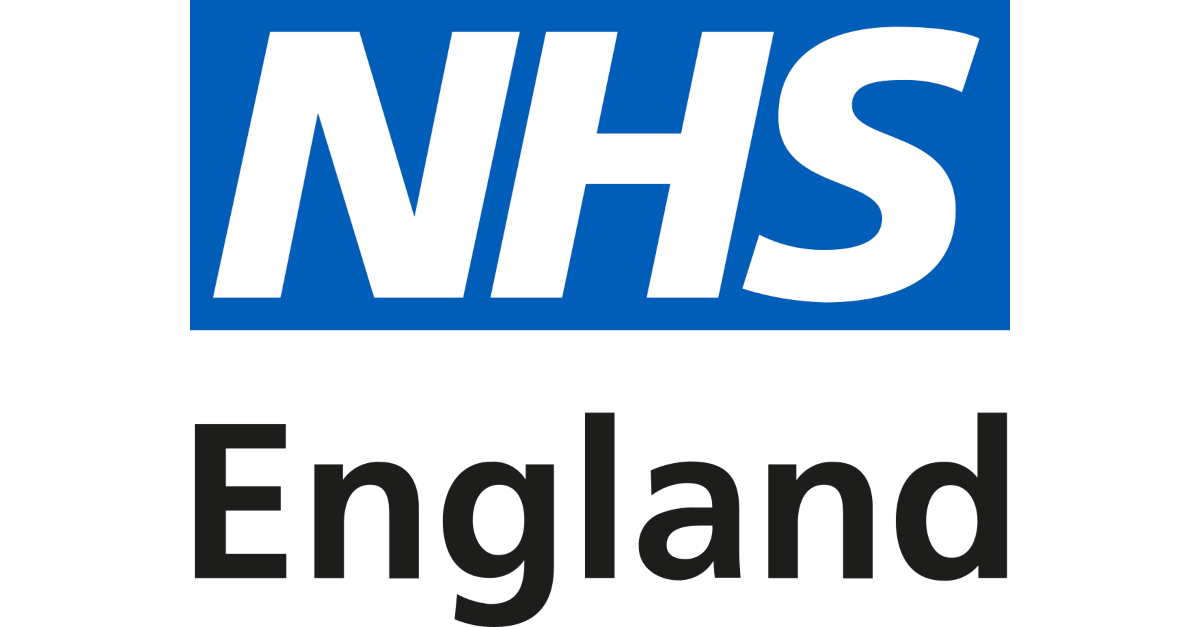It is estimated the year-long celebration for Bradford 2025 cost about £51m and generated audiences of 3m people.
Speaking after the final events, Ms Gulzar said it had created “a powerful new narrative for the city and district” and had helped…

It is estimated the year-long celebration for Bradford 2025 cost about £51m and generated audiences of 3m people.
Speaking after the final events, Ms Gulzar said it had created “a powerful new narrative for the city and district” and had helped…

The former Chief Executive of NHS England and a clinician who set up a service for refugee doctors are among those recognised on the New Years Honours list, released today (Monday 29 December).
Around three dozen NHS staff including nurses, surgeons, and GPs have been recognised for their service.
The head of the NHS, Sir James Mackey, commended the commitment of those recognised amid another challenging year for the health service.
The honours come at the end of a year in which the NHS dealt with record levels of demand and an early surge in winter viruses, but staff have continued working hard to bring down waiting times further.
This year also saw the launch of the 10 Year Health Plan, outlining steps to transform the NHS to ensure it is fit for future generations.
The NHS has already started to deliver on the key pillars of the plan through greater use of technology with record numbers of people now using the NHS App, and more support in communities with GPs delivering more appointments than ever before.
Chief Executive of NHS England Sir James Mackey said: “As this year comes to a close, it’s important to take a moment to thank all our NHS staff who have been recognised for their dedication and tireless efforts to improve care for patients across the country.
“It is incredible to see so many of our colleagues honoured for their commitment – from Amanda Pritchard, the first female chief executive of the NHS, to the clinicians transforming children’s care – we are incredibly grateful for the hard work of those who have continuously gone above and beyond for NHS patients.”
Health Minister Baroness Merron said:“I offer my warmest congratulations to Amanda Pritchard, Suzy Lishman, Sarah Anderson, Saffron Cordery and all the other amazing health and social care leaders for their recognition in His Majesty the King’s New Year Honours List.
“Amanda was hugely supportive during our time working together and showed incredible leadership in the face of the biggest health emergency in modern history.
“All those recognised in the list have demonstrated the highest levels of integrity and unwavering commitment to the health and social care sector.”
Former chief executive of NHS England, Amanda Pritchard, received a Dame Commander of the Order of the British Empire for her services to the NHS, including being the first woman in the health service’s history to hold the post of NHS chief executive, having began her NHS career as a graduate management trainee in 1997.
Amanda was Chief Executive from August 2021 until March 2025 and formally chief operating officer at NHS England from 2019, leading the NHS through the most challenging period in its 76-year history.
After leaving NHS England Amanda returned to be Chief Executive of Guy’s and St Thomas’ NHS Foundation Trust in September 2025, where she held the role previously. She was also previously Deputy Chief Executive at Chelsea and Westminster NHS Foundation Trust and served as a health team leader in the Prime Minister’s Delivery Unit.
She said: “I am deeply honoured to receive this award, which reflects the extraordinary achievements of so many people across the NHS past and present. The health service cares for over 1.7m people every day, with dedicated staff going above and beyond, time and again, for patients and their families.
“Their commitment was never clearer than during the Covid pandemic, including the NHS’s world-leading vaccine rollout. It was an enormous privilege to lead the NHS in England through what was undoubtedly the greatest challenge in the health service’s history.
“Staff have continued to show the same commitment and passion to recover services, innovate and transform care for the future. I am delighted to be back now on the front line of the NHS, continuing to play my part alongside extraordinary colleagues across the health service and beyond who are committed to providing high quality healthcare for all, now and for future generations. This honour belongs to them all.”
Also, among those praised for their work, was Jackie Hanson, former regional chief nurse for NHS England, who received a Member of the Order of the British Empire (MBE) for her services to the nursing profession and health services leadership.
She said: “I am deeply honoured and proud to receive this award that has been given in recognition of my leadership contribution to Nursing and Health services. I have been enormously privileged to work alongside dedicated, hardworking and compassionate staff who have strived to improve the quality of health care services for communities and patients within the North West.
“I dedicate this award to all of them and thank them for their support and guidance throughout my career.”
Dr Michael Marsh, NHS England’s former South West Medical Director, was also recognised with an MBE for his contributions to healthcare, including establishing the first Paediatric Intensive Care Unit at University Hospital Southampton – a landmark achievement that has had a lasting impact on the care of critically-ill children.
Dr Marsh said: “My entire career has been a joy and a privilege, firstly as a paediatrician caring for our most vulnerable and sickest patients, and as a medical leader improving services for the wider public. Now, in my non-executive roles at Moorfields and University Hospital Dorset, I’m able to continue to support high standards of clinical care.”
Also recognised was South West London and St George’s Mental Health NHS Trust Chief Executive, Vanessa Ford, who was awarded an MBE in recognition of her leadership and commitment to improving mental health services.
She said: “This honour recognises the incredible work of people across the Trust – our patients, their carers, our staff and our communities. I am fortunate to work alongside diverse, talented and compassionate people who work tirelessly to reduce the stigma of mental ill health and improve care for all of our communities. Receiving this award is an absolute honour, and one that belongs to us all.”
Retired doctor, Dr Maeve Keaney, was also recognised with an MBE for services to refugee doctors in Manchester, after establishing the Refugee and Asylum Seekers Centre for Healthcare Professionals Education project in 2003 – a programme that has supported hundreds of refugee and asylum seeker doctors and nurses to regain their professional identity and return to clinical work in the NHS.
Twins, Ryan Appleton and Dean Appleton from Colchester, who are both community first responders, are also receiving British Empire Medals for services to the community in the East of England.

Elliott said: “It’s absolutely brilliant. It’s such an honour, a lad from a council estate in Rotherham, and after all these years, getting an MBE is just such an honour. I’m very much a royalist.”
He said Marie Curie first came to his attention…

At 70, he became one of the oldest recipients of a Fellowship from the Institution of Engineering and Technology.
Although he’d first received the letter informing him of his inclusion on the list five weeks prior, it felt like “five years” had…

Emma SaundersCulture reporter
 Getty Images
Getty ImagesWicked star Cynthia Erivo has topped off another hugely successful year after being made a Member of the Order of the British Empire (MBE) in the New Year Honours list for services to music and drama.
The…

Jane Burston, founder and chief executive of Clean Air Fund, has been appointed an OBE for services to air quality.
The charity, which works to tackle global air pollution, has supported the implementation of schemes including the London Ultra Low…

Mr Jackson said that the foundation aimed to support families in the West Midlands and show people that it “was okay” to talk about their babies.
Every year, the couple create around 600 memory boxes for parents who have lost a baby, while around…

The boss of Sainsbury’s who helped turn around the grocer’s fortunes is among leading figures from the business world to be recognised in the new year honours list.
Simon Roberts, who has been chief executive of the UK’s second largest supermarket since 2020, has been made a Commander of the Order of the British Empire (CBE) for services to the retail industry.
His tenure has included leading Sainsbury’s through the Covid pandemic as well as the cost of living crisis while improving its market share, helping its stock price rise by about three-quarters.
Roberts courted controversy during 2025 as he was accused of “Orwellian” tactics for trialling facial recognition technology to combat shoplifting and embarked on a programme to axe 3,000 jobs as part of a £1bn cost-cutting drive while being paid more than £5m in the supermarket’s financial year to 1 March.
The businessman was a member of the then prime minister Rishi Sunak’s 2023 business council and took over as president of the Institute of Grocery Distribution in 2024.
Elsewhere in the business sector, the former National Grid chief executive John Pettigrew has been made a CBE for services to energy.
He ran National Grid, which runs much of Britain’s electricity grid, for almost 10 years until leaving the role in November. He had joined the business as a graduate in 1991.
In the defence industry, the former chief executive of BAE Systems Ian King becomes a CBE for services to the transport and defence sectors.
He led the FTSE 100 firm, which is Europe’s biggest defence contractor, for nearly a decade until his retirement in 2017 after a career spanning more than 40 years in the sector.
Gary Hoffman, the chair of the online bank Monzo who was previously the chief executive of Northern Rock, has also been made a CBE.
Hoffman, who was parachuted into Northern Rock in 2008 after it almost collapsed during the financial crisis, has been recognised for services to the economy and sport.
He was chair of the Premier League from 2020 to 2022 but faced criticism over his handling of Newcastle United’s takeover by a group led by Saudi Arabia’s sovereign wealth fund. He was also partly blamed for playing a role in the European Super League scandal.
This month there were reports that a number of investors were calling for Hoffman to be ousted from his role at Monzo.
Matt Brittin, who led Google in Europe, the Middle East and Africa until the start of 2025 and is now a non-executive director of Guardian Media Group, has been awarded a CBE for services to technology and to enhancing digital skills.
Pamela Maynard, Microsoft’s chief AI transformation officer, has been awarded an Order of the British Empire (OBE), as have Unilever’s research and development head, Jonathan Hague, and Peter Higgins, an entrepreneur who co-founded the menswear business Charles Tyrwhitt.

A man who has been appointed an MBE for services to the LGBTQ+ community described the award as a “huge honour”.
Matt Daniels, 50, was named among the recipients on the New Year Honours list, having volunteered for causes since his early 20s.
He…

December 29, 2025 at 4:52 pm
4 minute read
Independently prepared report details how NJEDA’s $190M SIC commitment will enhance NJ’s economic competitiveness
TRENTON, N.J. (December 22, 2025) – The New Jersey Economic Development Authority (NJEDA) today released findings from an economic impact assessment of the Strategic Innovation Center (SIC) initiative, which brings together startup founders, investors, academic institutions, and private sector leaders to foster research and development in high-growth sectors such as artificial intelligence (AI), the life sciences, and advanced manufacturing. The results found that the state’s 12 SICs will catalyze new and sustained economic activity in key industries, creating economic opportunities, supporting and retaining innovative early-stage companies, and driving long-term economic growth.
The report quantifies the 10-year economic impact of each SIC and showcases how the NJEDA’s investments in development, operations, and startup financing will lead to widespread economic growth. Collectively, the NJEDA’s $190 million SIC commitment is projected to create $8.9 billion in direct economic impact of graduated startup operations and research activities by year 10. New businesses that are formed and developed at SICs are expected to generate $17.2 billion in economic output, support 28,000 jobs, and contribute $427 million in total annual tax revenue.
“Since taking office, my administration has been focused on expanding resources for entrepreneurs and supporting startup development to reclaim New Jersey’s historic position as an innovation hub,” said Governor Phil Murphy. “The state’s growing roster of Strategic Innovation Centers will create new and long-term opportunities for startup founders, researchers, and industry stakeholders, increasing tax revenues and creating jobs across the Garden State.”
SICs are facilities that support research and development, innovation, and entrepreneurship through mentorship, networking opportunities, hands-on training, business support services, and education opportunities. SICs can be accelerators, incubators, or research centers. Having a physical location where entrepreneurs can collaborate will help support new, diverse innovators and help drive long-term economic growth.
“Over the past eight years, Governor Murphy and the Legislature have made historic investments into fostering a strong and equitable innovation ecosystem, ensuring all entrepreneurs have access to capital and the resources needed to build and grow in the Garden State,” said NJEDA Acting Chief Executive Officer Mary Maples. “The NJEDA’s Strategic Innovation Center initiative is creating collaborative environments where startups can thrive, creating billions in economic output and generating thousands of jobs in the decades to come.”
The independent report was conducted by Econsult Solutions Inc. It assessed employment, labor income, output, and tax revenue impacts using the IMPLAN modeling software, projecting both financial and economic development outcomes for each SIC to offer a total view across the SIC platform. Click here to read more.
“From North Jersey to South Jersey, Strategic Innovation Centers are supporting startups and technological innovation, helping drive our economy forward,” said NJEDA Chief Economic Transformation Officer Kathleen Coviello. “New Jersey has invested robust resources into its innovation economy throughout the Murphy Administration, and this report confirms that the return on our investment will be thousands of good-paying jobs and billions of dollars in economic impact. As we continue supporting our innovation ecosystem, it’ll lead to sustainable, long-term economic growth across the whole state.”
The report organizes New Jersey’s SICs into three clusters: Information and High Technology, Life Sciences, and Advanced Manufacturing. The 12 SICs are:
Information and High Technology
Life Sciences
Advanced Manufacturing
To learn more about the NJEDA’s SIC initiative, visit https://www.njeda.gov/strategic-innovation-centers/.
About the NJEDA
The New Jersey Economic Development Authority (NJEDA) serves as the State’s principal agency for driving economic growth. The NJEDA is committed to making New Jersey a national model for inclusive and sustainable economic development by focusing on key strategies to help build strong and dynamic communities, create good jobs for New Jersey residents, and provide pathways to a stronger and fairer economy. Through partnerships with a diverse range of stakeholders, the NJEDA creates and implements initiatives to enhance the economic vitality and quality of life in the State and strengthen New Jersey’s long-term economic competitiveness.
To learn more about NJEDA resources for businesses, call NJEDA Customer Care at 844-965-1125 or visit https://www.njeda.gov and follow @NewJerseyEDA on Facebook, Twitter, Instagram, and LinkedIn.
###